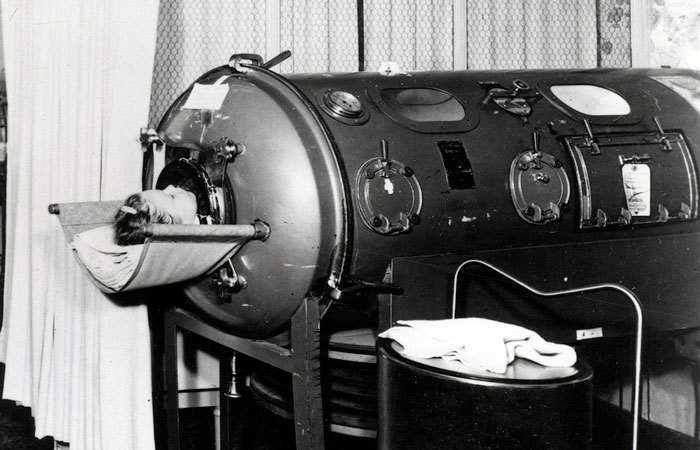The iron lung was a horizontal, body-length, steel tank that saved many people’s lives during the polio outbreaks in the first half of the twentieth century. Poliomyelitis was a viral infection that rapidly paralysed some people to the point where they could no longer breathe unaided. Without positive pressure ventilators, many died.
The iron lung was a tank invented in 1928 in Boston, United States, that housed people up to their necks and sucked air into their lungs by creating negative pressure in the chamber. It was a noisy and cumbersome piece of equipment, and everyday bodily functions like toileting, moving, reading, and talking, were difficult. But it saved lives. Over time, the majority of victims recovered, but they needed round-the-clock nursing and regular physiotherapy. All contact with the patient was done through portholes in the side of the tank, unless patients were brought out briefly to exercise.
Jim Costello, who was affected by polio at the age of 15, describes his experience in the late 1950s;
A physiotherapist began working with me to try to get me breathing on my own. She had a stopwatch and got me to stay out of the lung a few seconds longer each day. This was quite terrifying in the beginning as I had great difficulty breathing. When I began to recover my breathing eventually, the physio would do exercises and stretch my arms and legs, which was extremely painful. It usually ended up in a crying and shouting session.
Description provided by David Nicholls of New Zealand.
Reference:
https://www.thejournal.ie/readme/what-is-life-like-for-a-polio-survivor-3128107-Dec2016/

